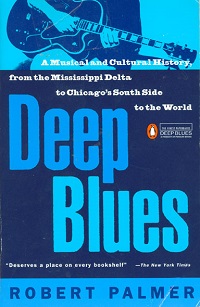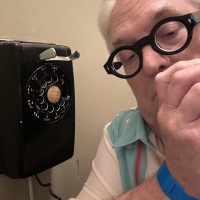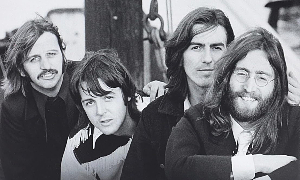Home » Jazz Articles » Book Review » Deep Blues: A Musical and Cultural History of the Missis...
Deep Blues: A Musical and Cultural History of the Mississippi Delta
 By Robert Palmer
By Robert Palmer Reprint, Viking Press, New York, 1995
ISBN 0140062238
Quantum Mechanics. One of the basic units of jazz is the blues. Therefore, it is appropriate that Michael Ricci would enlist the formidable talents of music journalist Ed Kopp to edit the All About Jazz Blues Section. In reading this section, I was compelled to share with our readership a book that was and is important in my personal musical education and ideology. There have been many fine and academically-focused treatises on the Blues which are included in the bibliography of this article. But as fine as they may be, the reading is often a bit dry. They are all essential reading, but essential once the reader's appetite for information of this truly American art form has been piqued. Robert Palmer's humid narrative Deep Blues is a perfect introduction and primer to the Blues. Written in an awesomely engaging style, the late Mr. Palmer spins a tale from the share- cropping Mississippi Delta to the World and its music at large. So vivid, one can smell that rich soil of the delta after rain or the potent tang of the industrial North during high July.
Beginnings and Endings. The book is divided into discrete and descriptive sections with imaginative titles. "It Wasn't No Big Money, but We's Do'in It" sets the stage. It introduces Robert Johnson, a myth, an African-American Ulysses, a phantom. This is right place to begin the discussion, a place shrouded in mystery. Palmer moves his discussion in the direction of ethnomusicologist Alan Lomax's seminal recordings of McKinley Morganfield, A.K.A. Muddy Waters on the Stovall Plantation. All powerful and fertile.
Part I of the book is composed of two chapters: "Beginnings" and "Heart Like Railroad Steel. Here Palmer deftly introduces the reader to Charlie Patton and Son House, whose recordings from the '20s, '30s,' and '40s scream through a rich topsoil of surface noise to touch musicians 60 years after their performers have been committed to that ground. The reader is almost blinded by the cotton rows in August in Dockery's Farm, and the hard thumb of Patton resonates in the brain like a cool course, relaxing the reader before delivering its heady punch.
Part II of the book returns to Muddy Waters and Robert Johnson with "Mojo Hand." Here Palmer relates the barometer bottom of the Faust legend: Johnson walks to the crossroads at midnight, lets the Devil tune his guitar, and from that point forward produces the most influential American music made. Muddy takes a more sinister route. He meets and plays beside Johnson, but then takes off in another direction. This new course includes other seminal artists like Louisiana's Walter Jacobs, destined to be monikered "Little Walter" because of his deceptively demure size. There has never been a better harmonic player, not even Lee Oskar or John Popper.
Chicago Pep shows the transition of Muddy Waters from rural Delta blues practitioner to pater of the Chicago Electric Blues. It follows his ascendancy to the throne in the '40s and '50s with the necessary discussion of his friend and commercial antithesis, Chester Burnett, A.K.A. Howlin' Wolf.
Part III takes us back to the Mississippi-Arkansas Delta and Rice Miller, A.K.A Sonny Boy Williamson II, playing for King Biscuit Time on KFFA in Helena. "King Biscuit Time" related is the story of Marvall, AR native Levon Helm and his Canadian buddies meeting the consumptive Miller and playing all night before discovering his lethal secret. Slide guitarist Robert Nighthawk is also mentioned in the breath of "Sweet Black Angel." "I Believe I'll dust My Broom" recounts how Elmore James' music changed the Delta Blues in the same way that Beethoven's changed classical music. The revolutionary from Canton did with an electrified slide guitar what the revolutionary from Bonn did with the orchestra: They chiseled a hole in the dike of World music to create a new musical order. The would be no Led Zeppelin or Allman Brothers without Elmore James. Do I hear an "Amen"!
Part III concludes with "Kings of Rhythm," a chapter devoted to the rise of the Richard Wagner of American Music— Ike Turner. "Rocket 66" is considered by many as the first Rock n' Roll song. Who is to argue? Is that fat white junkie dying in 1977 the father of Rock n' Roll? Only at the expense of the true father(s).
The World Boogie addresses the blues revival of the 1960s and beyond, up to the early 1980s. A story richly told by a master Southern storyteller, Palmer's true love for that primal creative urge is evident and palpable. We should be glad for that. Anyone with the least bit of interest in that atomic twelve bars should read this book first and honor those mentioned in the same breathe with the names of Bach, Beethoven, Copland, and Bernstein.
Bibliography
The Country Blues (Samuel Charters. Da Capo Press, New York, 1975. ISBN 0-306-80014-4).
Feel Like Going Home (Peter Guralnick, Harper & Row, New York, 1971. ISBN 0-06-097175-4)
King of the Delta Blues Singers: The Life and Music of Charlie Patton (Stephen Calt and Gayle Wardlow. Rock Chapel Press, New Jersey, 1988. ISBN 0-9618610-0-2).
Stomping The Blues (Albert Murray. Da Capo Press, New York, 1976. ISBN 0-306-80362-3).
Blues From The Delta (William Ferris. Doubleday Anchor Press, New York, 1978. ISBN 0-385-09920-7).
Mystery Train: Images of America in Rock and Roll Music (Greil Marcus. Dutton, New York, 1990. ISBN 0-525- 48556-2).
I'd Rather Be The Devil: Skip James and the Blues (Stephen Calt. Da Capo Press, New York, 1994. ISBN 0- 525-48556-2).
Searching For Robert Johnson (Peter Guralnick. Dutton, New York, 1989. ISBN 0-525-24801-3).
The Land Where The Blues Began (Alan Lomax. Pantheon, New York, 1993. ISBN 0-679-40424-4).
The History of the Blues (Francis Davis. Hyperion, New York, 1993. ISBN 0-7868-6052-9).
Tags
PREVIOUS / NEXT
Support All About Jazz
 All About Jazz has been a pillar of jazz since 1995, championing it as an art form and, more importantly, supporting the musicians who make it. Our enduring commitment has made "AAJ" one of the most culturally important websites of its kind, read by hundreds of thousands of fans, musicians and industry figures every month.
All About Jazz has been a pillar of jazz since 1995, championing it as an art form and, more importantly, supporting the musicians who make it. Our enduring commitment has made "AAJ" one of the most culturally important websites of its kind, read by hundreds of thousands of fans, musicians and industry figures every month.
































